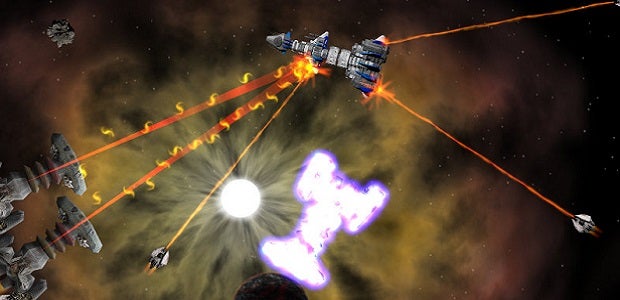
The hyperdrive works by propelling a ship along a hyperspace “link” between two star systems. The consensus among physicists is that these links are in fact not a naturally occurring phenomenon, but an artificial construct. Some believe that they are an ancient network of interstellar “roads” built by a species that inhabited our region of the galaxy millions of years ago. Others theorize that they are the equivalent of wheel-ruts in a well-traveled dirt road, worn into the fabric of space-time by a civilization with more advanced hyperspace technology. We do not currently know how to create more hyperspace links, and in fact we do not even know whether the links are permanent or may decay over time. No changes have been observed in the hyperspace network during the previous millennium, but much of human space was not thoroughly mapped or under close observation until recently.
Apart from all this speculation, it is a known fact that technology exists for traveling between systems that are not connected by hyperspace links, because that is how Quarg ships travel. However, the Quarg are unwilling to share this technology, and their ships are so much more powerful than ours that human beings have never succeeded in capturing one. In response to recent diplomatic outreach, the Quarg have indicated that the galaxy beyond the bounds of human space is a patchwork of territories inhabited by different species, with no hyperspace routes between them. The fact that these species, humanity included, do not possess jump drive technology is the only thing preventing war between them. They have further hinted that this balance of power is not maintained by the Quarg, but a far more advanced species. Given that the Quarg are capable of disassembling entire planets for use in constructing their ringworlds, any species that they hold in such awe must be terribly advanced, indeed.
To set a hyperspace target, press the map key (‘M’ by default) to call up the map, and click on your destination. If it is connected to the current system by known hyperspace links, the shortest known path to that system will be displayed. Otherwise, you will need to explore in that direction by traveling along known links until you find your way to your destination.
Your ship’s sensors use parallax measurements to find the locations of all star systems within a hundred light years of the current system, whether or not they are linked to the present system. Therefore, some stars may appear on the map even if you have not yet found a link to them. The range of these sensors is shown as a dark grey circle on the map.
Once you have set a hyperspace route, press the hyperspace key (‘J’ by default) to begin travel. Your hyperdrive cannot engage unless your ship is nearly at a standstill, so the autopilot will first bring you to a stop, then activate the hyperdrive. As with the landing autopilot, you can stop the hyperspace jump by pressing any other movement key, up until the point when the hyperdrive activates. But once it activates, you cannot disengage it until the jump to the next system is completed.
If your route contains multiple links, the autopilot will remain engaged and will again slow your ship to a stop and make the jump, repeating until you either reach your destination or run out of fuel. Be careful: not every star system contains planets where you can refuel. When exploring new territory, if you only have one jump of fuel left, it is wise to land and refuel rather than hoping that your destination system will turn out to be inhabited. Your remaining fuel is displayed on the right side of the screen, in the golden bar above the atomic energy symbol: each break in the bar represents one jump of fuel. If you never want to worry about becoming stranded and out of fuel, you can invest in a ramscoop, which slowly harvests deuterium from the solar wind to replenish your tank. Of course, most passing ships are glad to help out a novice pilot who has become stranded; just talk to them (‘T’ key by default) and ask for help.
The hyperdrive will not engage until you release the ‘J’ key, so if you are traveling with escorts you can hold it down to have them get ready to jump, then release it to all jump at once. The escort icons on the bottom left of the screen will turn yellow if your escorts are not ready to jump, or red if they are unable to (for example, because they don't have enough fuel).
Mining Asteroids
A pilot with a good eye and steady aim can earn an income just by harvesting materials from asteroids. Normal asteroids are indestructible, but orbiting some distance away from certain stars you will find unusual asteroids that can be mined. Some are an obviously different color or shape, but the most lucrative elements are found in asteroids that look very similar to ordinary ones:
If you’re flying a Sparrow or other small ship, it may take a while for your weak lasers to break open the asteroid, but if you keep at it for long enough the asteroid will explode and you can fly in to collect the fragments that it leaves behind.

0 commenti:
Post a Comment